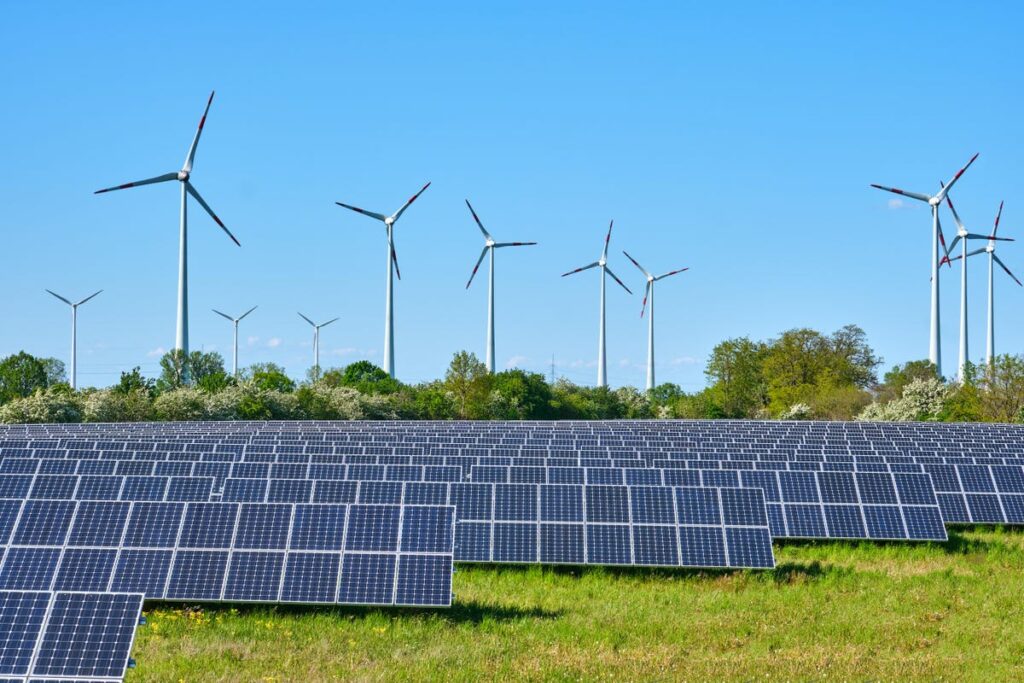Speaking of not checking facts or logic, Bloomberg recently ran a column saying, and we are not making it up, “$266 Trillion in Climate Spending is a No-Brainer”. To which we reply: Yes, only those with no brain could support it, because everything imaginable is wrong with that claim including that anyone even could spend $266 trillion. Quick question: What’s the US GDP? Right, and congratulations. It’s $25 trillion, more or less. How, seriously, could anyone attempt to get their hands on ten times that amount, or more than two and a half times the entire world GDP of around $96 trillion, let alone spend it in ways that changed the weather? Or even burn through it all at random? And why would you want to?
Because, if you don’t we’re all going to die, duh. But it won’t be easy, even though it won’t take a brain. As the author, Mark Gongloff, notes unhappily:
“Global investment in climate-related projects averaged nearly $1.3 trillion a year in 2021 and 2022, the nonprofit advisory group Climate Policy Initiative estimated recently, almost double the rate of such spending in 2019 and 2020.”
Now he, with a BA in journalism from the University of South Carolina, will cheerily spend 200 times that amount productively. What could be simpler?
Having politicians spend it, apparently. They are good at that kind of thing. And indeed Gongloff’s plan, if it’s the right word, is that:
“As impressive as $1.3 trillion might sound, it’s still far from the $8.6 trillion CPI estimates will be necessary every year between now and 2030, ramping up to $10 trillion annually through 2050, if we’re to limit global heating to 1.5C above pre-industrial averages and cope with the climate chaos already taking place. That’s a goal world leaders have set, and it’s our best hope of limiting the destruction and misery further heating will cause.”
And what of the destruction and misery caused by letting politicians confiscate all our wealth in pursuit of yet more failed climate schemes? Politicians’ plans rarely miscarry, at least in the minds of interventionist opinion writers unsoiled by real-world experience. Who are also prone to the related view that we can’t afford not to ramp up government spending on this, that and whatever. Thus, Gongloff lays down as though it were the ace of trumps, this mind-boggling invented sum:
“are pennies compared with the damage that will accumulate if we don’t make these investments. That could amount to $2.3 quadrillion by the end of the century, CPI points out, citing an estimate by the nonprofit group Central Banks and Supervisors Network for Greening the Financial System (another group partially funded by Bloomberg Philanthropies).”
Yeah. Could. Unless it doesn’t. When sensible economists look at the “problem” of warming, they conclude that if “ECS” is under two, that is, if doubling atmospheric CO2 raises temperature by less than 2C, the net effect is so small, and possibly marginally beneficial, that no climate policy is worth undertaking. Not no drastic one. Not no ambitious one. Not no expensive one. None of any sort.
So where did this $2.3 quadrillion come from? Well, apparently it’s chump change too:
“those quadrillions would just be the direct economic damage of such tangible climate effects as floods, wildfires, droughts, hurricanes, productivity loss and illnesses. They don’t include the destruction wrought by wars, forced migration or biodiversity loss.”
A Pelion of speculation atop an Ossa of guesswork. Disguised as mathiness, because the $266 trillion trivial expenditure is:
“not too far from a $200 trillion estimate by Bloomberg NEF, Bloomberg’s clean-energy research team, or a $275 trillion estimate by the consulting firm McKinsey.”
Proving that if you start from the same flawed assumptions and make the same flawed calculations, you may well get the same flawed answer especially if you were determined to when you started.
In the case of the CPI estimate, they keep talking about a “Business As Usual” scenario. Which they don’t identify further unless you drill down into their “Methodology document” and there it is: the exploded RCP8.5.
It would be. The McKinsey document also uses it, while admitting they might as well have monkeys throw darts at a Ouija board:
“Estimates suggest that failing to limit the rise of GHG emissions could affect between 2 and 20 percent of global GDP by 2050 under a high-emissions (RCP 8.5) scenario. The wide range reflects the intrinsic difficulty in making these estimates.”
Yeah. As in if you ask the CPI, or McKinsey, or the tarot reader on the midway, what will be happening in some particular industry, or national economy, in 2035, they have no idea. They don’t know if China will invade Taiwan, or a new plague will hit, or AI will make us all fabulously wealthy and we will recline on silk and write poetry to shame Lucullus. (Just kidding; he was a general. Horace was a poet.) But they can give you a precise figure on what we need to spend by 2050 globally to stop something terrible from happening that they can also forecast to a decimal place.
Or at least conjure up numbers that sound authoritative and confirm that you should do exactly what you were hoping to when you hired them. Either way.
We on the other hand are doing real science. As in predicting first, in this case that RCP8.5 will lurk, then going and checking and there it is. You too can do so.



Bloomberg is a left wing rag posing as a financial publication!
Aristophanes' 'Cloud Cuckoo Land'
Spend how many quadrillions?To prevent said climate apocalypse?Ya that'll work!One need only look at all the failed climate doom predictions of
the last 50 odd years to see how completely absurd this is!From Paul Ehrlich the scientist,to Al Gore the alarmist former politician,and all points
in between.And BTW,follow the money,to see how much they all have benefitted from Climate Change Alarmism!
I bet someone will come up with an idea that pensioners can pay that